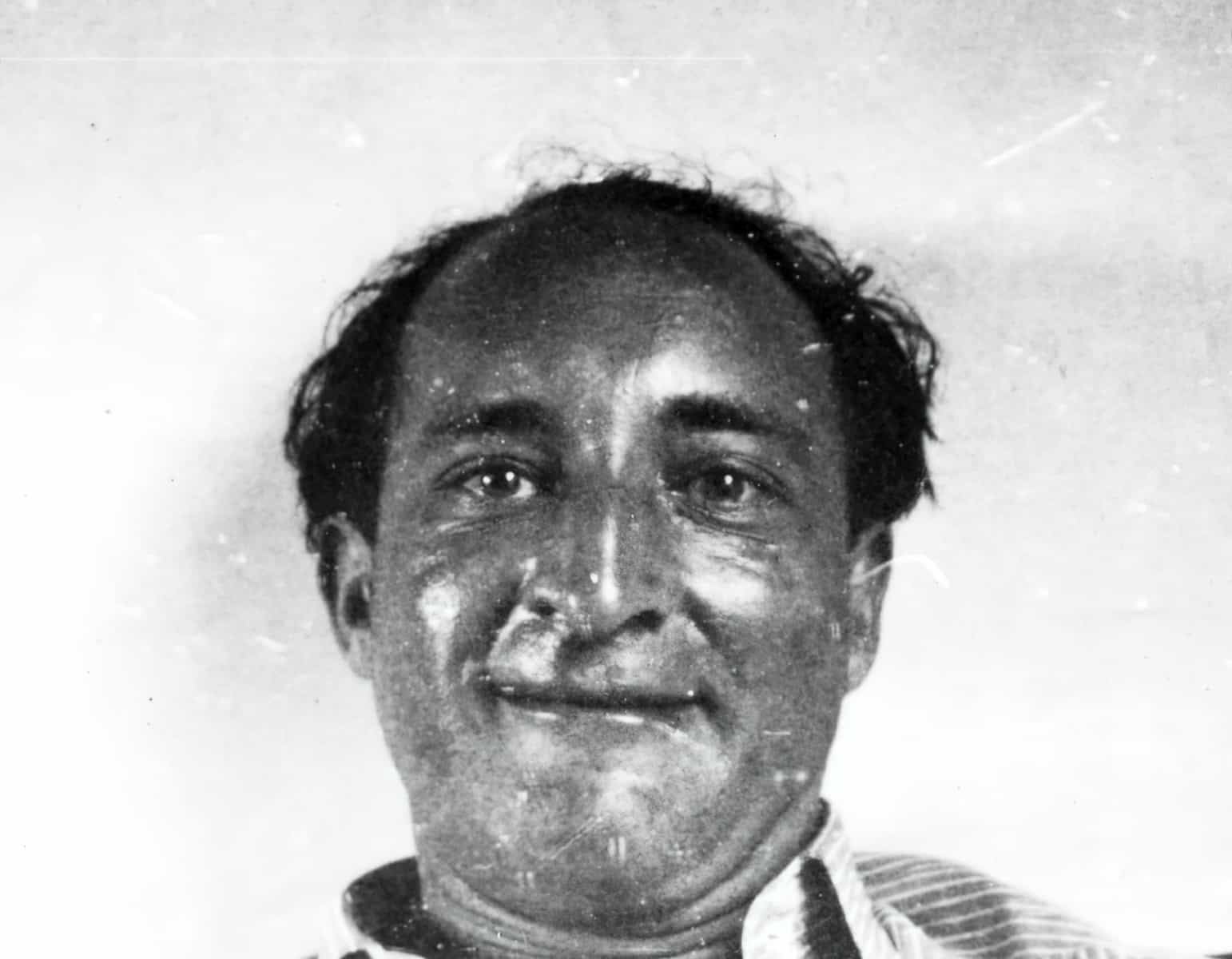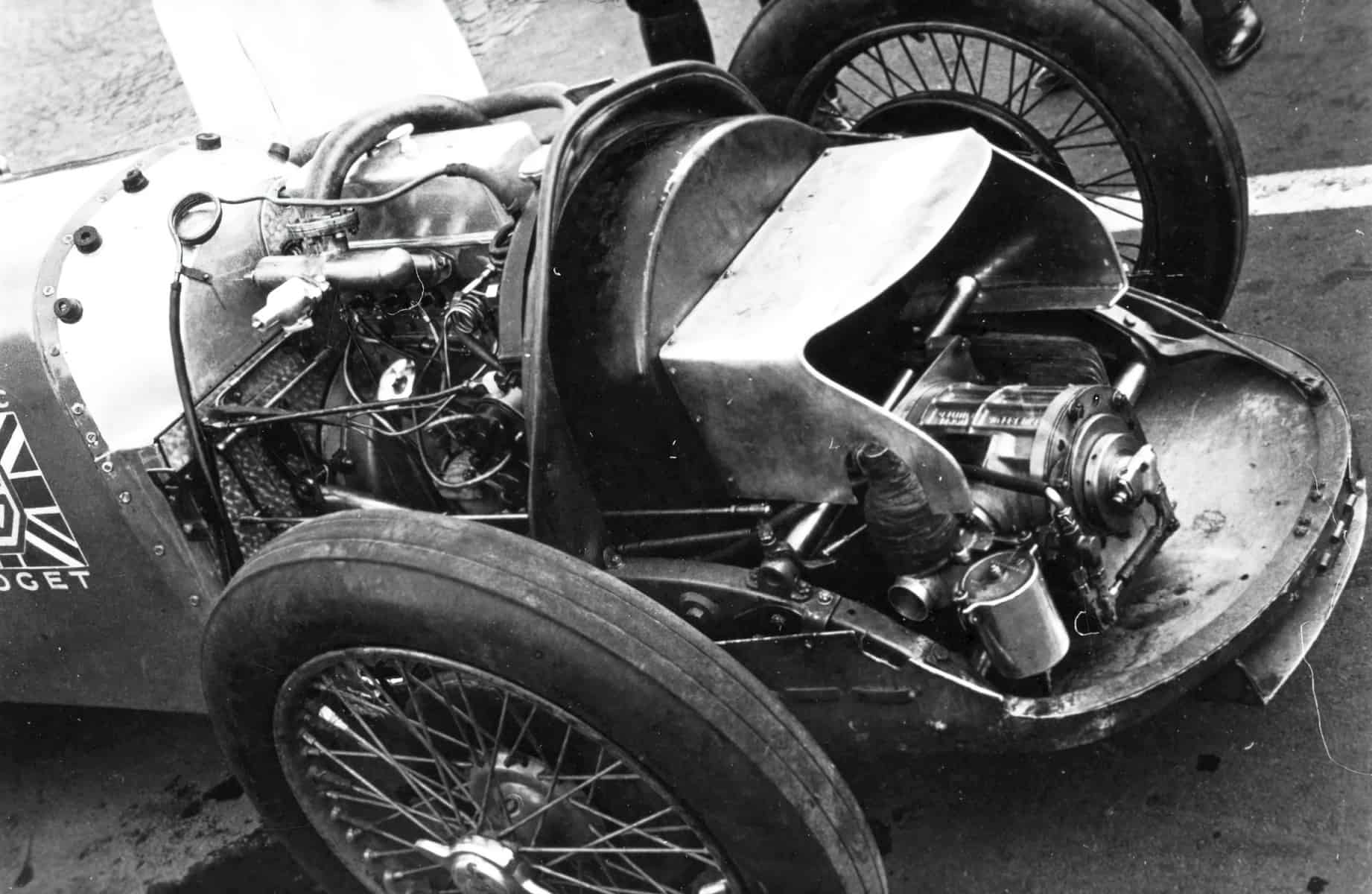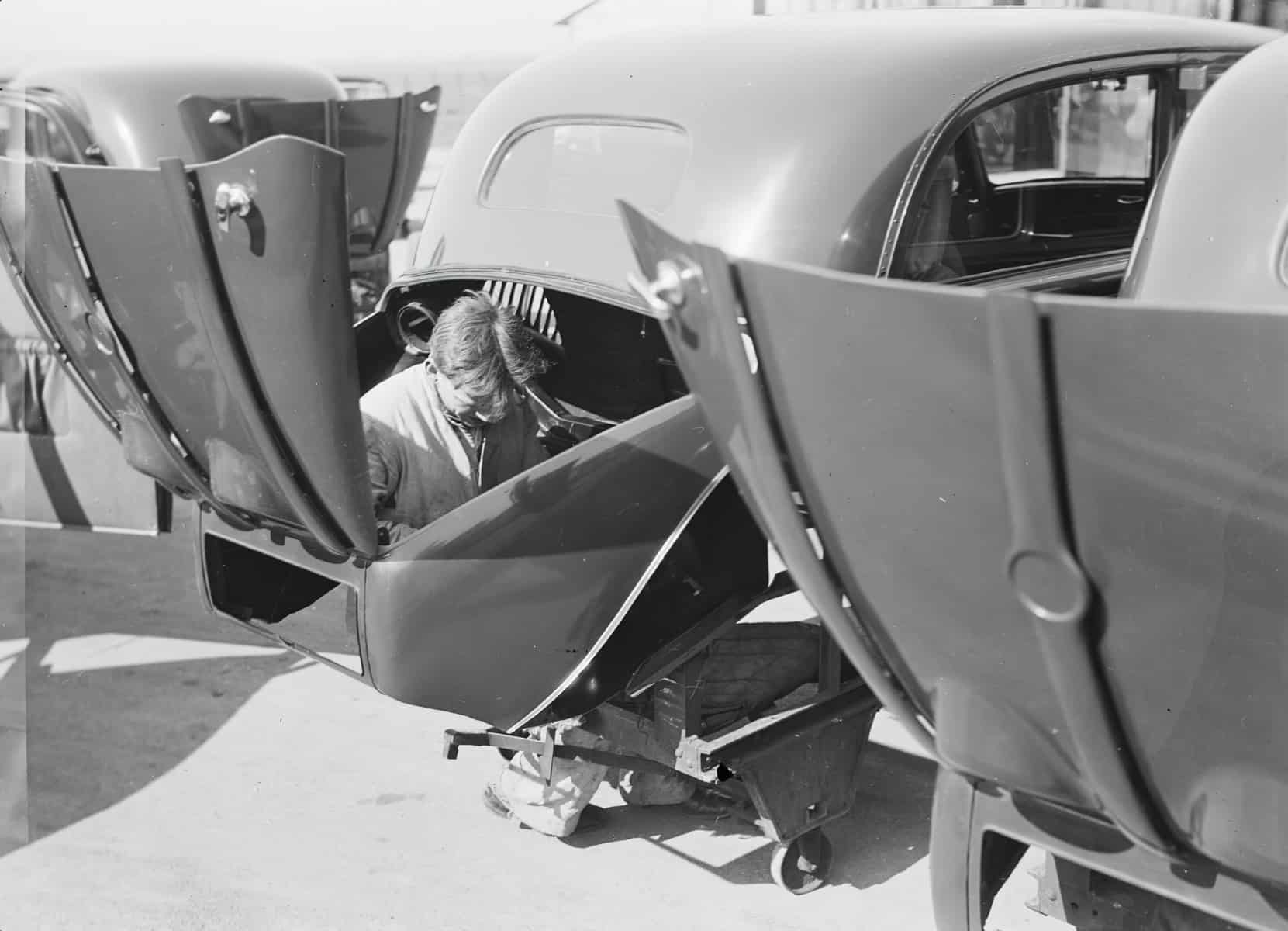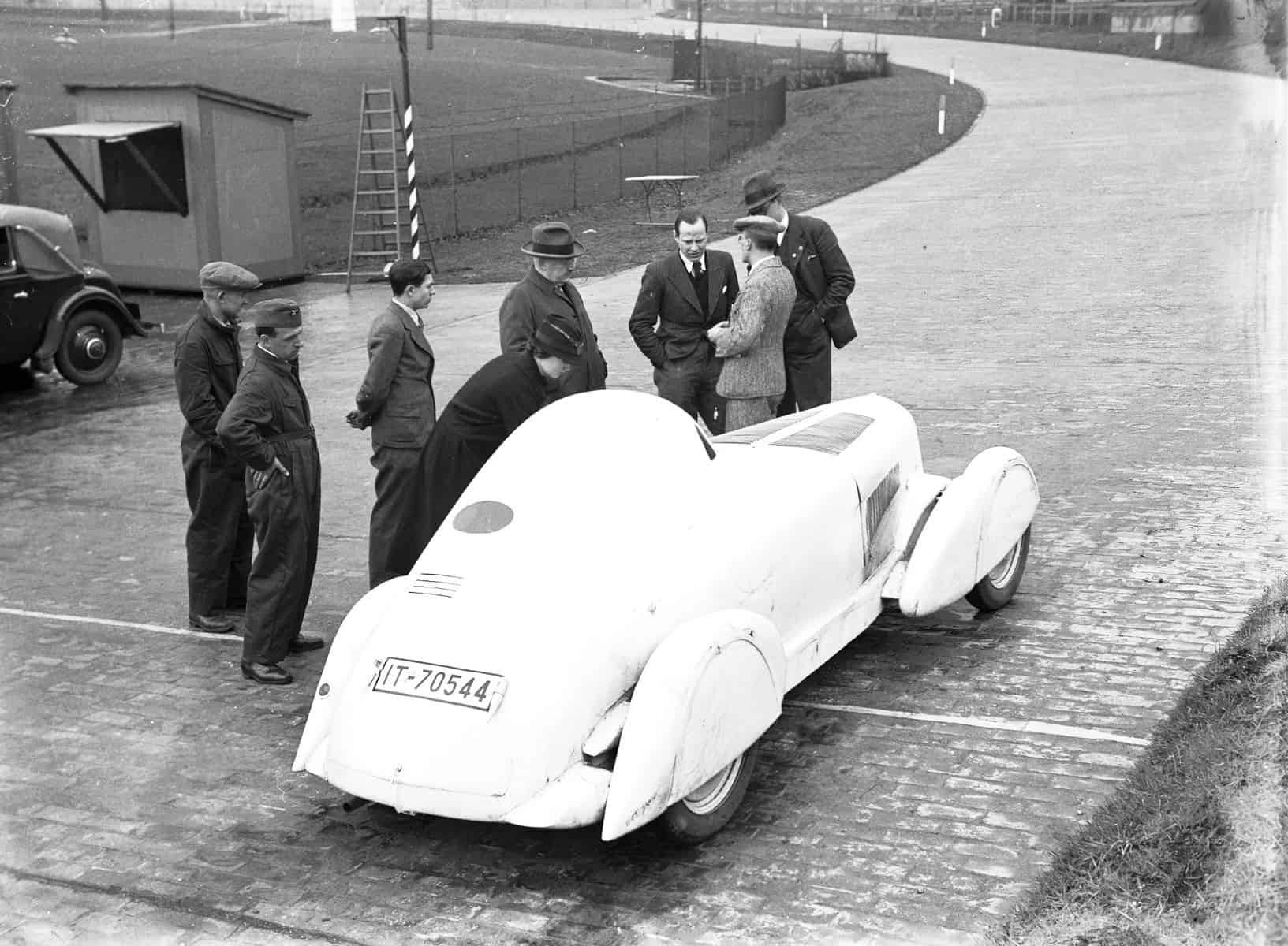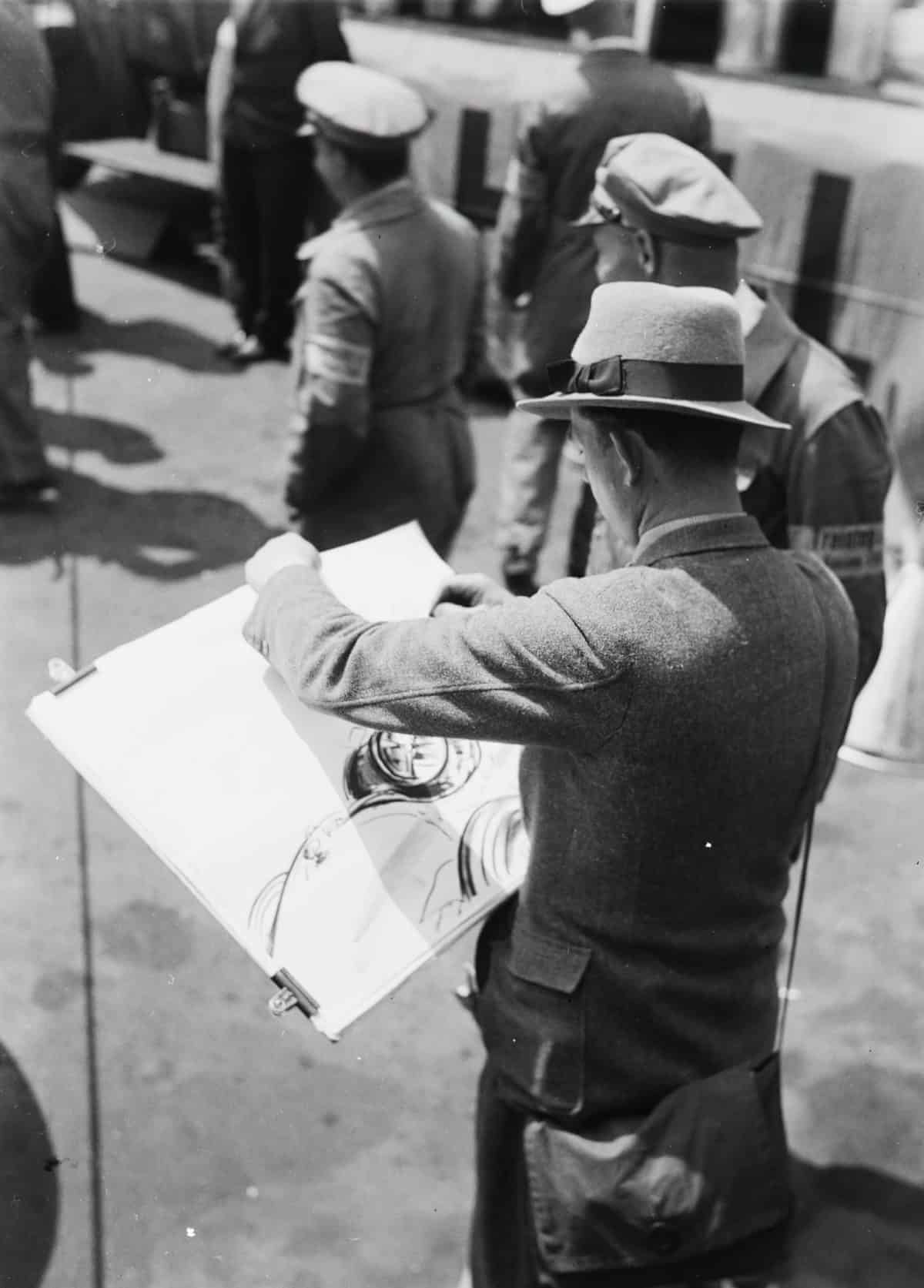Through the Glass Brightly
Celebrating the great photographer Zoltán Glass
BY: KARL LUDVIGSEN
PHOTOS: ZOLTÁN GLASS; NATIONAL SCIENCE AND MEDIA MUSEUM (UK)
Among the photographers who followed the racing and automotive scene in the 1930s, Zoltán Glass was special. He had a knack for selection and composition that was exceptional. Here is some background on the man along with eleven of his indelible images that have been selected for your enjoyment.
Born in Austria-Hungary’s Budapest in 1903, Zoltán Glass had exceptional skills as an artist and caricaturist. Mad keen on cars and racing, he also worked as a photographic retoucher, stevedore, night watchman, stage designer, and actor.
In 1925 Glass moved to Berlin, where he became the picture and art editor of the 8-Uhr-Abendblatt
Zoltán Glass made automobiles one of his main topics. Beginning in the 1930s he was commissioned by Daimler-Benz to take photographs of the company’s vehicles, not only in the races of that dramatic decade but also in motor shows, on the production lines, and in special shoots for publicity and advertising.
In 1936, when, as a Hungarian Jew he was prohibited from working for German newspapers, Zoltán Glass emigrated to London. After becoming a naturalized British subject in 1948, Glass returned to photography with his former passion. In 1964, at the age of sixty-one, he retired to Roquebrune in the south of France. From then until his death in 1981 Glass worked occasionally for various international advertising agencies.
In a fortunate twist of fate for the memory and reputation of Zoltán Glass, as well as the delectation of enthusiasts of fine photography, his archive of some six thousand images was lodged with the National Science and Media Museum in Bradford, West Yorkshire, UK. Their digitization was sponsored by Mercedes-Benz Classic, since many of the images were taken for that company in its heyday of racing in the 1930s.
A man of strong passions and enthusiasms, “Zolly” Glass would be thrilled to know that his photography is flourishing in its Bradford environment. I’ve made a personal selection of images from his early work that convey not only the spirit of the times but also the artistry with which Glass approached his subjects. Enjoy his gaze at a bygone era brought to life.
Zoltán Glass grimaced in amusement when taking an opportunistic self-portrait in the early 1930s. His ebullient Magyar personality shines through, an attribute that made him an attractive partner for the companies that commissioned work from him as well as for the people he photographed. His early artistic training and experience, as well as his spell as a picture editor, gave him a knack for composition that wonderfully informed his images.

One of the earliest of Zoltán Glass’s motor-racing images pictures two British drivers in Berlin at the Avus circuit in 1932. Henry “Tim” Birkin, left, was expecting to compete in the main race with his Bentley but wasn’t able to start. He was discussing his problems with Lord Howe, who entered his 1927 straight-eight Delage in the supporting event for Voiturettes.
In this, the first outing for Howe’s new acquisition, both car and driver were on devastating form, winning the category by almost three laps in a ten-lap race! In the foreground was the 35B Bugatti of Hans Stuber, who placed a commendable third in the main event.
Among the coachwork variations available from the Sindelfingen works of Daimler-Benz was this elegant pattern of adjustable louvers on a special body for the 380 chassis. They attracted the Glass lens at the 1934 Berlin Salon.
Behind them was a 4.0-liter straight eight, a new version introduced at Berlin, with pushrod-operated overhead valves and a driver-actuated supercharger. When this was engaged its output was 144 hp at 3,600 rpm. Designed under Hans Nibel, with its independent suspension at all four wheels, the 380 founded the dynasty that continued with the 500K and 540K.
Stripped of its front bodywork for service at Berlin’s Avus circuit in late May of 1934 was the MG “Magic Midget,” which was built to designs by Reg Jackson in 1931. Conceived at a time when MG and Austin were deadly rivals for speed honors in Class H for 750 cc cars, this racer was designed with the aim of being first to the iconic speed of two miles a minute.
The car was “EX 127” in MG’s series of specially built competition cars. Its four-cylinder C-Type MG engine initially delivered 75 supercharged horsepower from 746 cc. In 1932 at Britain’s Pendine Sands it was clocked at 118.39 mph and in 1933 at Montlhéry its timing was a stunning 128.62 mph in the hands of Bert Denly.
Before the 1934 season EX 127 was sold to Germany’s leading MG enthusiast, blond Robert “Bobby” Kohlrausch. Its first outing in his hands was at the Avus—where Glass pictured it—in the race for cars of 800 cc and 1,500 cc on May 27, 1934. Kohlrausch was easily fastest in his class on the high-speed Berlin track but, bizarrely, had to stop with severe cramps caused by the car’s contorted driving position.
Bobby Kohlrausch sent the MG back to the factory to have a new and more comfortable body made. After successes with the reworked Magic Midget he sold the car to Daimler-Benz, which experimented with its highly boosted engine when preparing the designs for its 1938 racing cars.
Daimler-Benz commissioned Zoltán Glass to carry out complete photographic coverage of the manufacturing process of its new rear-engined 130, introduced in 1934. With its 1.3-liter four-cylinder engine under the rear deck, the 130 was a radical departure from any previous automobile carrying the three-pointed star.
Of the many Glass images that cover the manufacturing process, I’m especially fond of this one, which shows a workman crouching inside the rear of the body where the 130’s engine will eventually go. It smacks of a one-manpower Mercedes.
Having introduced its front-wheel-drive Trumpf—for trump card—range at Geneva in 1932, Frankfurt’s Adler decided that record-breaking would help put it on the map. The work of Hans Gustav Röhr and his chief engineer Joseph Dauben, the Trumpf was soon offered with engines of 1.5, 1.7, and 1.9 liters.
The smallest size, the Trumpf Junior, was the basis of this record-breaker, driven by Heckel and Ors in November 1935 to a swathe of long-distance world speed records in its class at distances up to 10,000 kilometers, at which its average was a highly respectable 78.51 mph. No faster records were set before war broke out. Zoltán Glass pictured the ingenious record-breaker at Berlin’s Avus where it strutted its stuff.
The cutting edge of modernity envisioned in 1933 was brilliantly depicted by Zoltán Glass in a photo shoot highlighting the adventure of travel by land and air. Land transport was by Type 380 Mercedes-Benz, introduced that year and bodied in a special version of Cabriolet A style by Sindelfingen to a design by Hermann Ahrens, who arrived from Horch in September 1932.
The airplane was a Junkers G 38—the second of two produced—which entered service with Lufthansa in September 1931. Its seven-strong crew looked after thirty-four passengers in the double-decker fuselage of a four-engined aircraft that had a range of 2,150 miles, cruising at 127 mph. It was a frequent visitor to London.
This magnificent flying machine, registered as D-2500, was personally dubbed Generalfeldmarschall von Hindenburg by Hermann Göring in an elaborate ceremony at Berlin’s Tempelhof Airport on April 29, 1933. The Nazis had been in power just three months.
The high-speed spectacle of Berlin’s Avus, a straight multi-lane expressway raced in both directions, was captured by Glass from the Auto Union pit during the Avusrennen weekend at the end of May 1934. This was the first race for the Auto Unions, which had previously set International Class C speed records at the track.
Taken during practice for the 182-mile race, Zoltán’s shot of an Auto Union leaving its pit showed it without race numbers and a short tail instead of the longer tails they wore in the race. Too new to figure well in the results, two of the three Auto Unions retired while the survivor of August Momberger finished third behind two Alfa Romeos.
It would take a braver man than I to hazard a guess at which car this artist at the Avus races of 1934 was drawing from life. Berlin’s press and public took an immense interest in the Avusrennen, promising as it did the debut of both new German Grand Prix teams. Hungry for images, the capital’s newspapers sent artists as well as photographers to cover the action.
The 200,000 spectators were disappointed by the withdrawal of the three new Mercedes-Benz, blamed on fuel-supply problems, but hailed the Auto Unions in their battles with Alfa Romeos, Maseratis, and a lone American Miller.
At Baden-Baden on July 21, 1934, two magnificent Mercedes-Benz roadsters awaited the signal to start that year’s 2,000-Kilometer Trial. Both were the 500K model, which had been introduced that February. Its 4,982 cc straight-eight delivered 160 hp with its blower engaged.
While Number 12 had conventional bodywork, Number 13 had more purposeful low-slung lines. At its wheel was test engineer Rudolf Uhlenhaut, accompanied by Wemmer. Zoltán Glass found the perfect vantage point to picture the scene at the start with its ample supply of arm-banded functionaries to subdue crowds.
Rudi Uhlenhaut negotiated the event’s 2,196 kilometers—1,365 miles—well enough to earn a golden plaque. In 1936 he would take over the Mercedes-Benz Grand Prix racing effort and transform its prospects with fresh and creative contributions to its engineering.
